2018 山东省威海市中考英语真题及答案
注意事项:
1.本试卷共 8 页,共 80 分,考试时间 90 分钟,考试结束后,将本试卷和答题卡一并交
回。
2.答题前,考生务必用毫米黑色签字笔将自己的姓名、考生号、座号填写在答题卡和试
卷规定的位置上。
3.需要涂卡的小题,选出答案后,用 2B 铅笔把答题卡上对应题目的答案标号涂黑;如
需改动,用橡皮擦干净后,再选涂其他答案标号,答案涂在试卷上无效。
4.非选择题必须用毫米黑色签字笔作答,答案必须写在答题卡指定区域内相应的位置,
写在试卷上的答案无效;如需改动,先划掉原来的答案,然后再写上新的答案;不能使用
涂改液、胶带纸、修正带,不按以上要求作答的答案无效。
一、阅读理解(共五篇短文,共 25 小题,计 30 分。其中 1-20 每小题 1 分;21-25 每小题
2 分)
阅读 A、B 篇。从文后每小题 A、B、C 选项中选择最佳答案。请将答案编号涂卡。
A
One day Vimala and her new friend. Mary, were playing at school. Mary was a very
quiet and shy girl but Vimala liked her. While jumping, Mary’s glasses fell off
and broke. Just then the bell rang and they had to hurry to their science class.
“Oh dear, I'm going to be as blind as a bat. But we'd better hurry. It's Miss
Lee's class, "said Maray.
At the start of the lesson, Miss Lee explained how to do the experiment to produce
large eye crystals. Then she started to question the class. Nobody dared to give
a wrong answer because Miss Lee was a very strict teacher Miss Lee held up a clamp(夹
具) and said, "What do we use is for? What do we call it? All the girls looked down,
while she looked at their heads for one to pick on. "Mary?" she finally asked.
Mary was sitting at the back of the class. She stood up and peered at Miss Lee,
but she could not see clearly what the teacher was holding. She was nervous a bit
and did not answer.
Miss Lee repeated her question. This time she spoke more slowly and there was
�
anger in her voice.
"What is this used for ?" she asked
Vimala saw storm clouds climbing up to Miss Lee's face. She knew that the storm
was about to burst on Mary, so she put up her hand. Miss Lee paid no attention to
her and stared through narrowed eyes at Mary, waiting for an answer.
Mary did not know what to say. She looked to her left and right for help. Too
seared to say out that she couldn’t see clearly, Mary hoped that if she kept quiet
Miss Lee would ask somebody else.
Vimala guessed what was wrong, so she decided to take a risk. She jumped to her
feet and said, "Excuse me. Miss Lee. Mary broke her glasses just before the lesson
started. I don't think she can see the clamp clearly. "Then she sat down, praying
(祈祷)that the ceiling would not fall on her.
“Oh!” Miss Lee said, a little surprised. She had thought that Mary was refusing
to answer.
Now that she understood, her anger faded away. “Thank you, Vimala.” she said Then
she turned
to Mary and said, “Come and look at this.”
Mary left her chair and went to the front of the class.
“It’s a clamp.” she said. "We can put it on a metal stand(支架) and use it
to hold things in place.”
"Well, you got it right at last. "Miss Lee said with a brief smile. But you'd
better not do any experiments until your glasses have been repaired. You can watch
Vimala while the does the experiment.
The storm clouds disappeared. The smile disappeared from Miss Lee's face and
she continued with the lesson. Vimala winked at Mary who peered at her and smiled
weakly.
1. What's the matter with Mary’s glasses?
A. They were lost.
B. They were broken
C. They were left s home
2. Miss Lee was __________ teacher.
�
A. an English
B a science
C. a math
3. Why couldn't Mary answer Miss Lee's question?
A. Because she didn't know the answer
B. Because she couldn't hear what Miss Lee was saying
C. Because she couldn’t see what the teacher was holding
4. The sentence "Vimala saw storm clouds climbing up to Miss Lee's face.” means
Vimala found_______
A. the sky was cloudy
B. a heavy storm was coming
C. Miss Lee was becoming
angry
5. Which of the following is not right?
A. Mary was quiet and shy and also as blind as a bat
B. Miss Lee was a strict and serious teacher
C. Mary knew what a clamp was used for
B
Amanda Kitts is one of “tomorrow’s people” people who have artificial (人
工的) body pats. She has a bionic(电子操控的)arm.
Now, Kitts nuns a day -care center. Children nun up to her
happily as she comes into the classroom.
She bends over to talk with a small girl. As
she bends Kitts puts her hands on her knees.
For most people, this would be easy. However,
just a few years
ago, this was impossible for Kitts.
In 2006, Kitts was in a car accident. A
truck crushed(挤坏) her left arm and the doctor had to
cut it off. "I was angry, said, depressed. I just couldn't accept it, she says.
But then she heard about a new technique that could use the remaining nerves(神
经) in her shoulder to contort an artificial arm.
In a difficult operation, a doctor novel Kitts's nerves to different mens of
�
her upper- arm muscles. For months, the nerves grew. Millimeter by millimeter, they
moved deeper into their new homes. “At three months I started feeling little tingles
and twitches(刺痛和抽搐),”she said. A month later, she got her first bionic arm.
A research engineer worked with Kitts to make the computer programs match her real
movements more and more closely.
Today, Kitts's arm is great, but it's not yet perfect. She wants feeling in her
hands. For example, she needs to feel whether something is rough or smooth. She
also needs feeling to do one of her favorite things-drink coffee "The problem with
a paper coffee cup is that my hand will close until it gets a solid grip,” she
says. One time at a coffee shop, her hand kept closing until it crushed the cup.
But Kitts says positively, "One day I'll be able to feel things with it, and clap
my hands… to the songs my kids are singing”
6. What is the difference between Kitts and normal people?
A. She has a bionic arm.
B. She can bend
C. She can put her hands on
her knees
7. Kitts got her first bionic arm _____________after the difficult operation.
A almost three months
B over one month
C. more than four months
8. Kitts is able to ____________with her bionic hand.
A. clap her hands
B. hold thing
C. feel rough or smooth things
9. Kitts's attitude toward her new arm is______________.
A. positive
B. Angry
C. perfect
10. Choose the right order of the events
①Kitts heard about a new technique
②Kitts crushed a paper coffee cup
③Kitts had two human arms
④A truck hit Kitts's car
⑤Kitts got her first bionic arm
⑥Doctors moved some of the nerves in Kitts’s arm
A.④①⑥⑤②③
B.③④⑤①②⑥
C.③④①⑥⑤②
�
C
阅读 C 篇,判断正(A)误(B)。请将答案编号涂卡。A 表示正确,B 表示错误。
Bangladesh (孟加拉)is an agricultural country between India and Burma. Storms
from the
Indian Ocean sweep across the country every year, and large areas of farming land
are flooded(冲毁). The people are very poor.
Fewer than half of the country’s children complete their primary education.
When they are six or seven years old, many children leave school to work in the
fields or at home. The rest of their "education" consists of looking after cattle,
collecting firewood or doing household jobs.
Not long ago, an experimental school was opened near the capital, Dacca, to help
poor children. There are only 120 children in the school, which has three classrooms.
In each class, forty pupils are divided into four groups of ten. Each pupil is free
to decide which group he or she wants to join.
The most able pupils do a great deal of the teaching. They act as group monitors.
Their duty is to ensure that all pupils in their group understand and practice what
the teacher has taught.
There are a number of unusual features in the Bangladesh school. Children do not
move up a class automatically when they grow older. Each group is promoted (升
级)only when EVERY pupil in it has succeeded in getting to the right standard. As
a result, all members of a group work hard to help the less able pupils. Nobody
is left behind.
Lessons are extremely practical and include work on farming, carpentry, health
and running a home, as well as lessons on the basic skills of reading, writing and
arithmetic. At school, pupils prepare for adult life by learning to carry out almost
all the tasks which they will face when they grow older.
If pupils have to look after cattle or young children, they are allowed to bring
them to school. If a child has to stay at home to help his parents, there is no
scolding or punishment (责罚) at school. Children enjoy their lessons and the school
�
is cheap to run. It is so successful that other schools in Bangladesh are beginning
to imitate (模仿) its methods. Visitors are even coming from other agricultural
countries to see if they can use a similar method.
11. Many people in Bangladesh work on farms
12. Most children in Bangladesh complete their primary education
13. In each group, the biggest or oldest pupil is made a monitor.
14. At the end of each school year, all the pupils move to a higher class
15. At school, pupils learn to do almost all the tasks needed in adult life
阅读 D 篇,根据短文内容,将下面方框中的句子还原到文章当中,使短文内容完整。
D
请将答案编号涂卡。
Complain(抱怨) Politely
Not everything goes the way you want it to. You may go to a restaurant and order
a nice meal. But your order is wrong or not cooked properly. You may buy a product
that breaks the next day.
However, if you speak angrily to people, they will become defensive(自卫的). Then
they are less likely to help you. A more effective (有效的)way to get what you want
is to stay calm.
Use polite language and a friendly tone of voice. Start with phrases such as,
" I'm sorry to bother you, but. "or" Excuse me, but could you.?" For example, "I'm
sorry to bother you, but I ordered potato soup, not vegetable, "Phrasing your
complaint as a question also helps.
you help me? I just bought this phone case
yesterday, but it's cracked.”
18. __________There is no faster way to make someone defensive than by blaming
them. Use
the phrase. “ I know this isn't your fault, but … ” or “ There has been a
misunderstanding.” people isn’t as important as getting a problem fixed!
There are honest mistakes, but at times someone may try to take advantage of
you. In that case, don’t say "Hey! You're trying to cheat me! "Instead, use the
�
phrase, "I understood that.." For example. "I understood that the service charge
was included in the price. Then give the person a chance to answer.
If you don't get what you want with polite conversation ask to speak to a manager
or supervisor. .
A. When trying to comet a problem, don’t blame (责备)the person you re talking
to.
B. People like to be asked rather than told!
C. But usually, you'll find that polite words and a smile will resolve a situation.
D. These kinds of experiences make you want to complain.
E. These phrases let people know you are only angry at the situation
E
研读 E 篇文字和图表,根据情境及问题简要作答。请将答案填写到答题卡指定位置。
Sara wants to buy a motorcycle. She sees an ad in the newspaper for a used one.
She calls the
telephone number in the ad. The person who is selling the motorcycle lives on Flag
Street in Clifton, about 15 miles from Fairview where Sara lives. She'll take a
bus to get there on Sunday.
At the bus station. Sara looks through the bus schedules(时刻表). She sees one
that says “Fairview, Clifton" on the front. That’s what Sara needs.
Please look at the bus schedule carefully. Then help Sara make her decision,
and answer the following questions.
21. Why docs Sara want to go to Flag Street?
22. What bus can Sara take according to the schedule?
23. Sara decides to arrive at Flag Street before 12: 00 by the No. 7 bus. What
time should the bus leave Fairview Station?
24. When Sara gets on the No. 7 bus, she finds that Flag Street stop has been
closed because of the street repairs. She has to get off at another stop, Look at
the schedule again, where should Sara get off the bus so that she can have a shorter
walk to Flag Street?
�
25. Now Sara is on Flag Street. She wants to visit a friend on her returning trip.
Her friend is
around the comer of Church and North Street. Which is the proper bus for her to
take and where
to get on the bus?
二、单词拼写(共 8 小题,计 8 分)
根据句意和音标提示以适当形式填写单词。请将答案填写在答题卡指定位置。
26. I looked into the classroom but I found it______________/’empti/
27. Tina is a_________ /’spe??l/ friend of mine.
28. Most of the teenagers admire_____________/’h?? ??z/
29. The _____________/’si: kr?t/ of his success was hard work.
30. I ___________/n?kt/ at the door, but there was no answer.
31. She was seriously ill, but now she is out of_____________/’deind???/
32. The boy__________/θru:/ a stone at a bird but missed it.
33. They tried hard to provide a beautiful_________/in’va?r?nm?nt/ for the
children.
三、动词填空(共 8 小题,计 8 分)
用括号里所给动词的适当形式填空。请将答案填写在答题卡指定位置。
Drawing might help you think
When you're sitting in class, have you ever drawn pictures in the margins of
your notebooks?
If so, your teacher might have told you (stop). Many people think of doodling(涂
鸦) as a distraction(精神涣散) from more important things. But it might be just
the opposite.
One study shows that doodling may help you remember things you hear. In 2009
researchers asked two groups of people to listen to a phone message. One group
35_________(encourage) to doodle, but the other was not. Neither group knew that
it would be asked to remember information from the message. But the group that
doodled remembered 29 percent more.
�


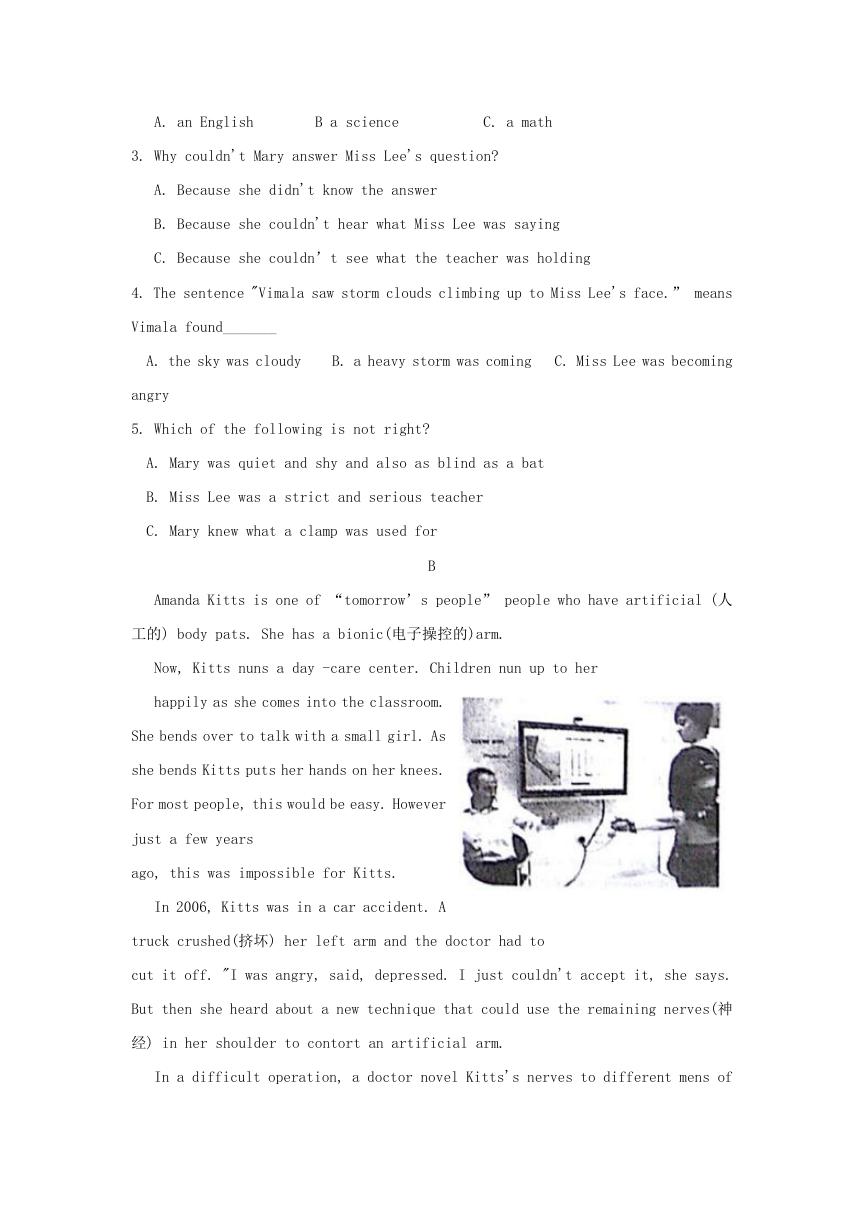
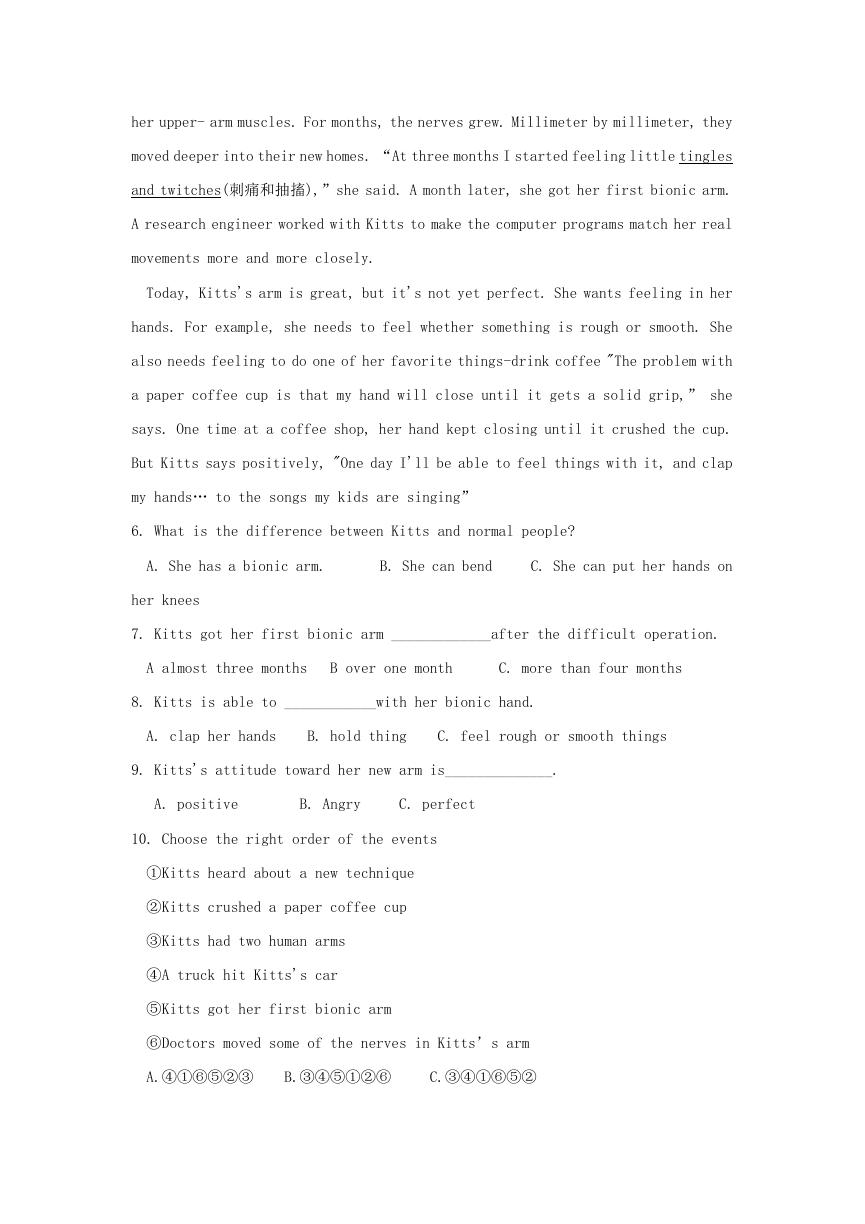
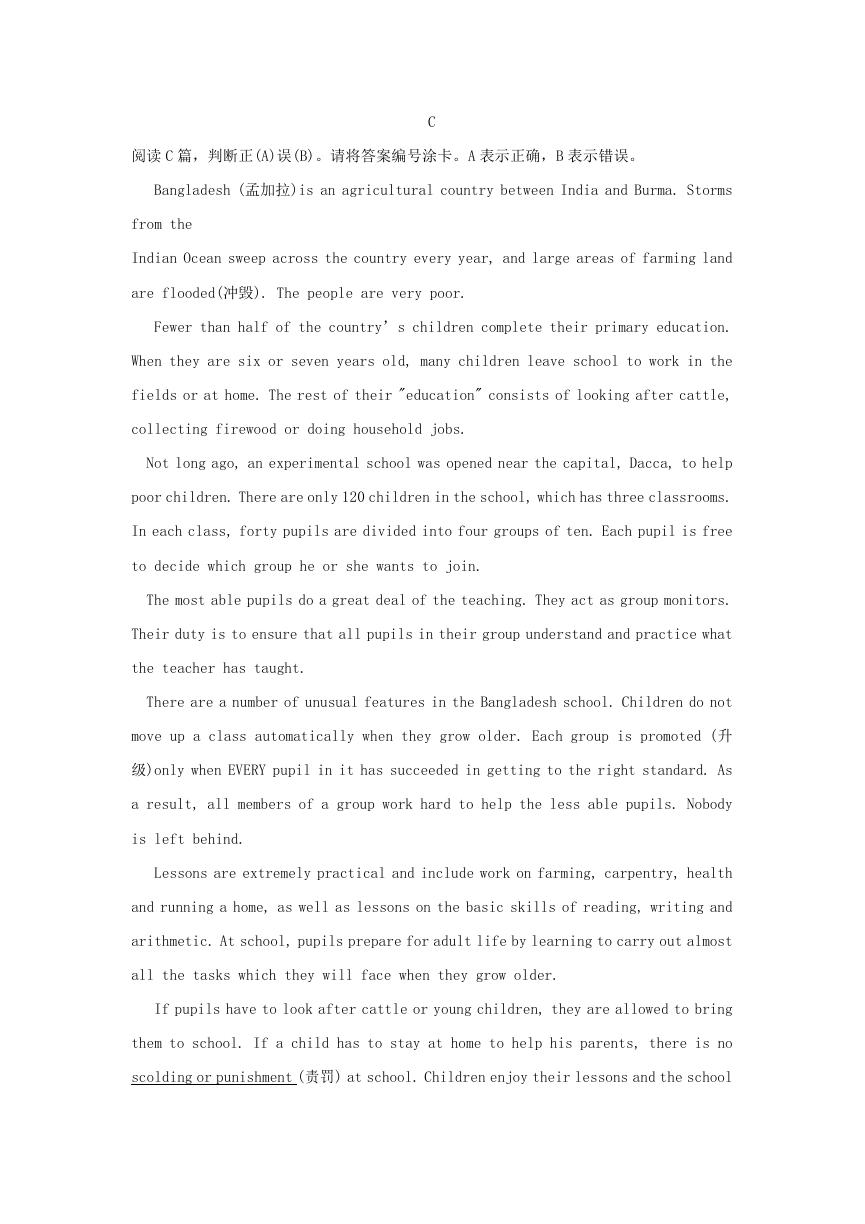
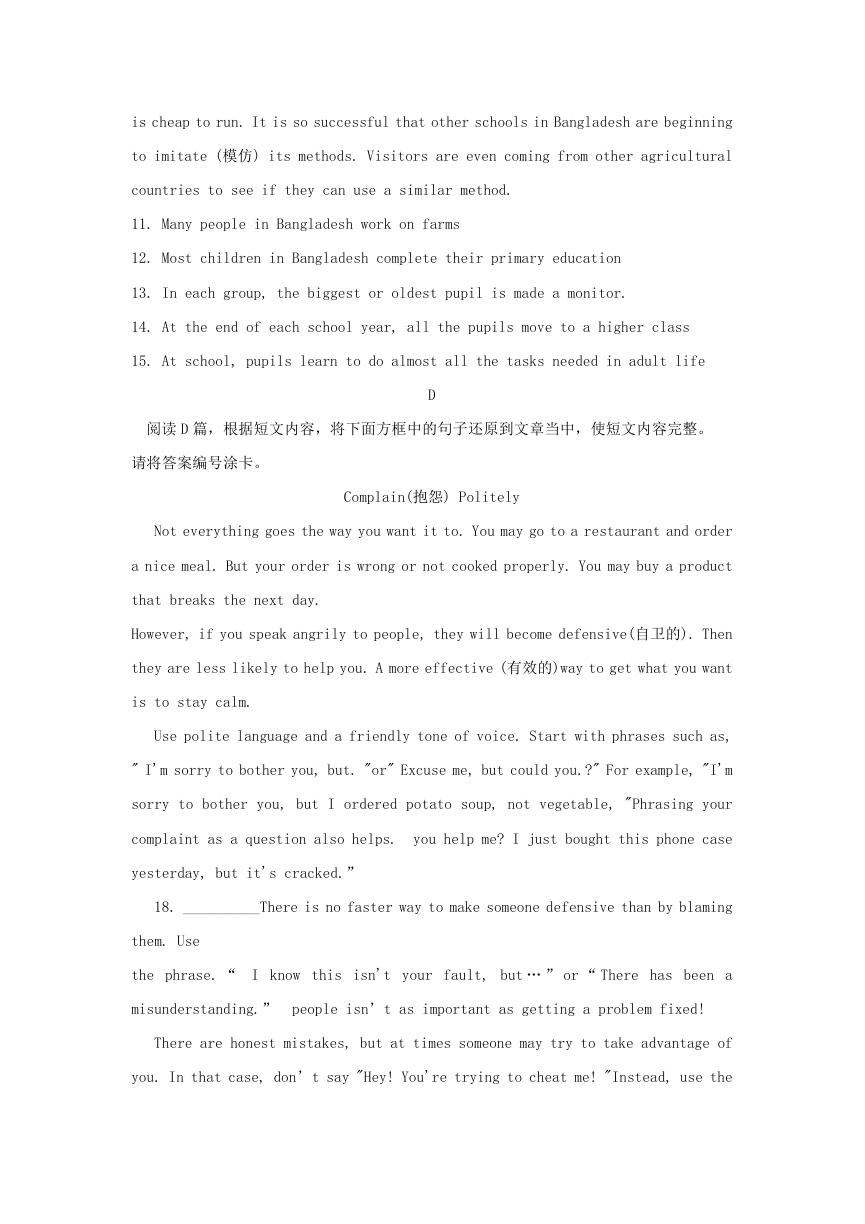
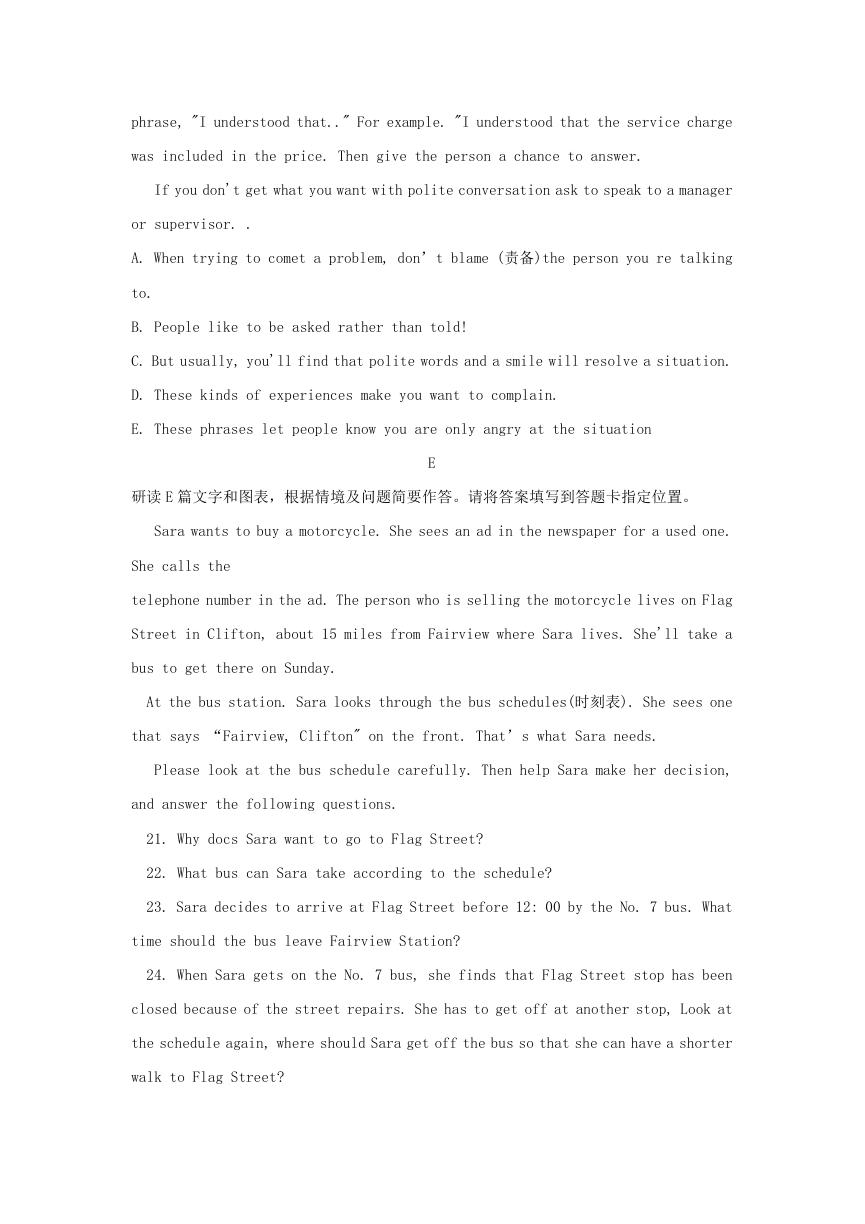









 2023年江西萍乡中考道德与法治真题及答案.doc
2023年江西萍乡中考道德与法治真题及答案.doc 2012年重庆南川中考生物真题及答案.doc
2012年重庆南川中考生物真题及答案.doc 2013年江西师范大学地理学综合及文艺理论基础考研真题.doc
2013年江西师范大学地理学综合及文艺理论基础考研真题.doc 2020年四川甘孜小升初语文真题及答案I卷.doc
2020年四川甘孜小升初语文真题及答案I卷.doc 2020年注册岩土工程师专业基础考试真题及答案.doc
2020年注册岩土工程师专业基础考试真题及答案.doc 2023-2024学年福建省厦门市九年级上学期数学月考试题及答案.doc
2023-2024学年福建省厦门市九年级上学期数学月考试题及答案.doc 2021-2022学年辽宁省沈阳市大东区九年级上学期语文期末试题及答案.doc
2021-2022学年辽宁省沈阳市大东区九年级上学期语文期末试题及答案.doc 2022-2023学年北京东城区初三第一学期物理期末试卷及答案.doc
2022-2023学年北京东城区初三第一学期物理期末试卷及答案.doc 2018上半年江西教师资格初中地理学科知识与教学能力真题及答案.doc
2018上半年江西教师资格初中地理学科知识与教学能力真题及答案.doc 2012年河北国家公务员申论考试真题及答案-省级.doc
2012年河北国家公务员申论考试真题及答案-省级.doc 2020-2021学年江苏省扬州市江都区邵樊片九年级上学期数学第一次质量检测试题及答案.doc
2020-2021学年江苏省扬州市江都区邵樊片九年级上学期数学第一次质量检测试题及答案.doc 2022下半年黑龙江教师资格证中学综合素质真题及答案.doc
2022下半年黑龙江教师资格证中学综合素质真题及答案.doc